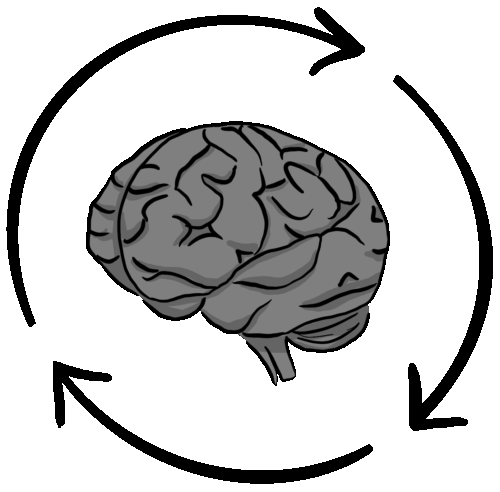Each day begins the same way: a diagonal cut across Plympton Street near the Harvard Book Store, my head quickly snapping sideways to check for oncoming cars. From there, I pass beneath the iron gate by Wigglesworth C—its outline etched into muscle memory—as I make my way through the Yard. These gestures aren’t calculated, but they aren’t accidental either. They mark the start of the day—small motions shaped more by environment than intention.
Michel de Certeau, the French scholar and cultural theorist, writes in “The Practice of Everyday Life:” “The ordinary practitioners of the city live ‘down below,’ below the thresholds at which visibility begins.” At Harvard, that threshold feels sharply drawn. Campus life unfolds like a curated exhibition—grand libraries, manicured lawns, engraved stone—everything deliberately placed, precisely meaningful. Yet my morning ritual plays out beneath that formal structure, responding to subtle cues embedded in the landscape, and directing my movements in ways I barely notice.
In the dining hall, rituals take shape. Students form invisible boundaries, choosing seats at tables marked not by signs but by repetition and silent consensus. Meals become choreographies—familiar nods, predictable silences, and unspoken agreements about when to rise and leave. De Certeau calls these routines “ways of operating” within spaces structured by power. They aren’t explicit acts of complacency, but they reveal how deeply institutions shape even our smallest gestures.
These practices reveal the mechanics of subtle influence. The more we repeat them, the more natural they feel—until we stop noticing them altogether. In retracing the same steps, we sustain a system that organizes campus life into legible rhythms, soft rules, and silent maps.
Power pulses through sound—or its absence. The hush of the Lamont basement, the careful clatter of silverware in the dining halls, the measured pace of footsteps across the Science Center Plaza—all suggest a kind of script. Quiet here isn’t just decorum; it’s performance. It signals discipline, status, control. We learn when to lower our voices, when to pause, and when not to be heard at all.
These norms don’t just govern movement or silence—they discipline the body more intimately. We learn how to look engaged without seeming eager, how to stay composed when cold-called in section, how to signal seriousness through posture, tone, restraint. Even emotion becomes stylized. The institution doesn’t dictate how we feel, but it teaches us how to appear: controlled, articulate, self-contained.
De Certeau writes that “everyday life invents itself by poaching in countless ways on the property of others.” At Harvard, perhaps we unconsciously internalize institutional expectations, adapting to the rhythms and rituals the environment demands. My habits—crossing Mass Ave diagonally, passing through the Wigglesworth gate, stepping around the loose brick near the Yard—aren’t just personal quirks.
Once you begin to see the script, it becomes harder to move freely. You start to wonder: if these choices aren’t really mine, what else have I mistaken for autonomy? The routes I take, the way I sit, the moments I stay silent—how much is authored by the institution? Awareness doesn’t always offer escape. Sometimes, it just sharpens the outline of the cage.
This realization unsettles more than routine. It raises deeper questions about what is visible and what isn’t, what is legible and what is ignored. Who decides which behaviors feel natural? What values get encoded in the rituals we repeat without thinking? Visibility, after all, is never neutral. It’s curated, enforced, and inherited.
And yet, these habits persist for a reason. They offer comfort and continuity, anchoring us in spaces too complex to navigate consciously at every moment. Our rituals stabilize us—not just emotionally but socially—by mirroring the expectations already etched in our environment. Institutions don’t just impose order; they shape instinct.
These reflections reach far beyond Harvard. Cities, offices, and public transit systems all operate on invisible scripts that shape how we move, speak, and belong. Think of the unspoken rules on a crowded subway: how people instinctively avoid eye contact, the way commuters arrange themselves to take up minimal space, or how everyone knows to let others exit before boarding. In workplaces, routines form around coffee machines, meeting etiquette, or how email sign-offs subtly signal hierarchy.
The more familiar these scripts become, the harder they are to question. Recognizing how they differ across contexts can help us see not just how power operates here, but how environments shape behavior in ways that might seem invisible until they are disrupted.
That’s why the small, unnoticed choices matter. Because they scale. A student who learns to anticipate authority becomes a worker who doesn’t question protocol. A ritual learned in one space becomes a reflex in another. These scripts follow us not because we remember them, but because we forget they were ever learned.
Tomorrow morning, I’ll walk past that brick again. Maybe I’ll step on it deliberately, just to see if the world shifts. Or maybe I won’t. Either way, in that small decision lies a universe of quiet meaning—hidden in plain sight.
Becoming aware of these scripts feels both unsettling and liberating. There’s a strange comfort in realizing that my habits, once thought personal, are part of something much larger, crafted by the institution and absorbed almost unconsciously. Yet, with that awareness comes a sense of dislocation. I feel both aware and implicated, caught between seeing the script and living within it.
De Certeau, ever attuned to the unseen, would suggest that noticing these subtle rituals is the first step toward understanding the structures that shape our lives. Perhaps recognizing the quiet choreography of our routines doesn’t grant us freedom, but it does offer a clearer sense of where we stand—and how we might choose to move.
Luke Wagner ’26 (lukewagner@college.harvard.edu) is the Vice President of the Independent.

